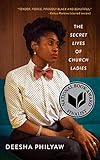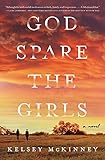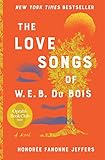I have been an avid reader all my life, ever since I learned how to blend syllables and hold board books. Even before that, when I was read to, the world that existed on the page was always a world that I wanted to return to. It was my escape, my comfort, my safety net, my home. I never imagined that reading would one day become my only way of connecting to the world that I was often prohibited from entering in 2020 and 2021.
 It seems fortuitous that I began 2021 by reading a close friend’s debut novel—The Final Revival of Opal and Nev by Dawnie Walton. It was a book that I had been blown away by in workshop years prior, so knowing that its pitch-perfect polyphony of voices would be published in just a few months reminded me that there would soon be something brilliant in a world that was in desperate need of goodness and beauty. On the heels of Walton’s extraordinary debut, I read Emily Fridlund’s History of Wolves and found myself transported to a landscape of adolescence, wonder, and obsession situated in the starkness of northern Minnesota—a setting whose iciness amplifies the terror in Fridlund’s fictional world. Fridlund’s premise reminded me about how fragile girlhood is, about the tenuousness of growing up seeking external validation that is often disappointing when you finally receive it.
It seems fortuitous that I began 2021 by reading a close friend’s debut novel—The Final Revival of Opal and Nev by Dawnie Walton. It was a book that I had been blown away by in workshop years prior, so knowing that its pitch-perfect polyphony of voices would be published in just a few months reminded me that there would soon be something brilliant in a world that was in desperate need of goodness and beauty. On the heels of Walton’s extraordinary debut, I read Emily Fridlund’s History of Wolves and found myself transported to a landscape of adolescence, wonder, and obsession situated in the starkness of northern Minnesota—a setting whose iciness amplifies the terror in Fridlund’s fictional world. Fridlund’s premise reminded me about how fragile girlhood is, about the tenuousness of growing up seeking external validation that is often disappointing when you finally receive it.

 Next, I briefly turned my gaze to nonfiction and read Nadia Owusu’s astounding memoir Aftershocks. By using the extended metaphor of earthquakes and their corresponding aftershocks, Owusu chronicles a life of geographic, physical, and emotional displacement. Over the course of the memoir, she navigates her identity and discovers where home is. Back with my feet in the fictional realm, I devoured Gabriela Garcia’s Of Women and Salt and traversed through place and time from Mexico to Texas to Cuba to Miami. Garcia’s deft prose spans decades, from the mid-1900s to the early 2000s, and explores how mothers and daughters grapple with their intertwined familial legacies, identities, and traumas.
Next, I briefly turned my gaze to nonfiction and read Nadia Owusu’s astounding memoir Aftershocks. By using the extended metaphor of earthquakes and their corresponding aftershocks, Owusu chronicles a life of geographic, physical, and emotional displacement. Over the course of the memoir, she navigates her identity and discovers where home is. Back with my feet in the fictional realm, I devoured Gabriela Garcia’s Of Women and Salt and traversed through place and time from Mexico to Texas to Cuba to Miami. Garcia’s deft prose spans decades, from the mid-1900s to the early 2000s, and explores how mothers and daughters grapple with their intertwined familial legacies, identities, and traumas.


 As it got closer to my book’s launch date in May 2021, I turned my gaze to books about religion. In her phenomenal short story collection The Secret Lives of Church Ladies, Deesha Philyaw gives Black women who dwell within the church’s oppressive patriarchal structure the voice and agency to forge their own identities either aligned with (or separate from) the church’s decrees of “holiness.” Soon thereafter, I read Kelsey McKinney’s God Spare the Girls—another bold text grappling with gender, religion, and power in a Texas evangelical church. There were numerous striking echoes and resonances between McKinney’s world and the one I created in Revival Season. I rounded out my reading about religion with Chimamanda Ngozi Adichie’s incredible novel Purple Hibiscus. From its early pages, Adichie’s stunning language transported me to a world where powerful religious men cause the ones closest to them to suffer. Adichie begs readers to answer the question: What happens when the person who is your conduit to God is himself ungodly?
As it got closer to my book’s launch date in May 2021, I turned my gaze to books about religion. In her phenomenal short story collection The Secret Lives of Church Ladies, Deesha Philyaw gives Black women who dwell within the church’s oppressive patriarchal structure the voice and agency to forge their own identities either aligned with (or separate from) the church’s decrees of “holiness.” Soon thereafter, I read Kelsey McKinney’s God Spare the Girls—another bold text grappling with gender, religion, and power in a Texas evangelical church. There were numerous striking echoes and resonances between McKinney’s world and the one I created in Revival Season. I rounded out my reading about religion with Chimamanda Ngozi Adichie’s incredible novel Purple Hibiscus. From its early pages, Adichie’s stunning language transported me to a world where powerful religious men cause the ones closest to them to suffer. Adichie begs readers to answer the question: What happens when the person who is your conduit to God is himself ungodly?


 In the months immediately after my novel’s release, I was feeling stir crazy. Summer is usually a time when I travel, but closed international borders meant that reading would have to become the geographical escape that it used to be when I was a child. In Patricia Engel’s Infinite Country, I visited a girls’ prison in Colombia and explored themes of migration, family, borders, and loss. Alexis Schaitkin’s Saint X chronicles a family grappling with an unsolved crime on the fictional Caribbean island of Saint X. In Maggie O’Farrell’s Hamnet, I traveled to Stratford where I learned about Shakespeare’s wife and children, including his son Hamnet. O’Farrell’s exquisite writing invited me into this family’s unimaginable grief and loss. My brief summer travels ended in Japan with Convenience Store Woman, where I was astounded by how Sayaka Murata made the tidy world of a convenience store (which also becomes the self-contained universe of her protagonist Keiko) vivid, real, and memorable.
In the months immediately after my novel’s release, I was feeling stir crazy. Summer is usually a time when I travel, but closed international borders meant that reading would have to become the geographical escape that it used to be when I was a child. In Patricia Engel’s Infinite Country, I visited a girls’ prison in Colombia and explored themes of migration, family, borders, and loss. Alexis Schaitkin’s Saint X chronicles a family grappling with an unsolved crime on the fictional Caribbean island of Saint X. In Maggie O’Farrell’s Hamnet, I traveled to Stratford where I learned about Shakespeare’s wife and children, including his son Hamnet. O’Farrell’s exquisite writing invited me into this family’s unimaginable grief and loss. My brief summer travels ended in Japan with Convenience Store Woman, where I was astounded by how Sayaka Murata made the tidy world of a convenience store (which also becomes the self-contained universe of her protagonist Keiko) vivid, real, and memorable.

 In the past few months, I have lost myself in novels that are epic in size, scope, and scale, beginning with Honorée Fanonne Jeffers’s The Love Songs of W.E.B. DuBois. This novel illustrates how the looming shadows of enslavement and secret family trauma haunt a young woman as she comes of age. Esi Edugyan’s Washington Black also explores themes of enslavement and trauma, and her titular character asks readers to believe in a world where it is literally possible to fly away from physical bondage.
In the past few months, I have lost myself in novels that are epic in size, scope, and scale, beginning with Honorée Fanonne Jeffers’s The Love Songs of W.E.B. DuBois. This novel illustrates how the looming shadows of enslavement and secret family trauma haunt a young woman as she comes of age. Esi Edugyan’s Washington Black also explores themes of enslavement and trauma, and her titular character asks readers to believe in a world where it is literally possible to fly away from physical bondage.
 I re-read Toni Morrison every year because I need to be reminded of what’s possible in fiction and why I became a writer in the first place. This year, I re-read Jazz with my MFA students in a seminar on unreliable narration. When I think about Jazz alongside Washington Black, I think about a different kind of liberation that Morrison offers to the characters in all her novels—the opportunity to be fully themselves in a Black world. In these worlds, her characters can make mistakes (like the marital infidelity that catalyzes the ensuing violence in Jazz), but she only allows them to be judged by litmus tests that they create, not by any external matrices. Morrison’s work is a perpetual reminder of what fiction is for: to perceive the world that exists, imagine possibilities that do not currently exist, and write the world that we want to see.
I re-read Toni Morrison every year because I need to be reminded of what’s possible in fiction and why I became a writer in the first place. This year, I re-read Jazz with my MFA students in a seminar on unreliable narration. When I think about Jazz alongside Washington Black, I think about a different kind of liberation that Morrison offers to the characters in all her novels—the opportunity to be fully themselves in a Black world. In these worlds, her characters can make mistakes (like the marital infidelity that catalyzes the ensuing violence in Jazz), but she only allows them to be judged by litmus tests that they create, not by any external matrices. Morrison’s work is a perpetual reminder of what fiction is for: to perceive the world that exists, imagine possibilities that do not currently exist, and write the world that we want to see.
More from A Year in Reading 2021 (opens in a new tab)
Don’t miss: A Year in Reading 2020, 2019, 2018, 2017, 2016, 2015, 2014, 2013, 2012, 2011, 2010, 2009, 2008, 2007, 2006, 2005









